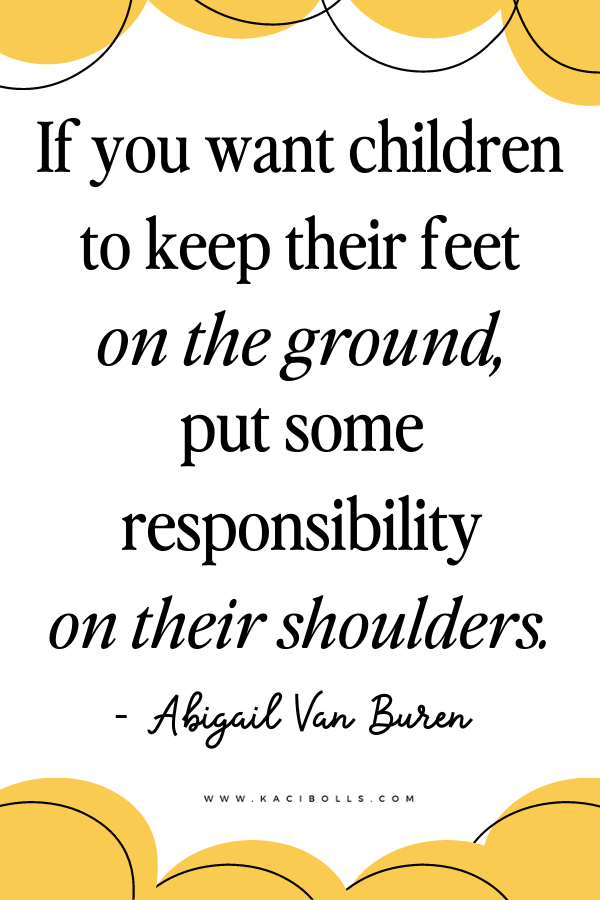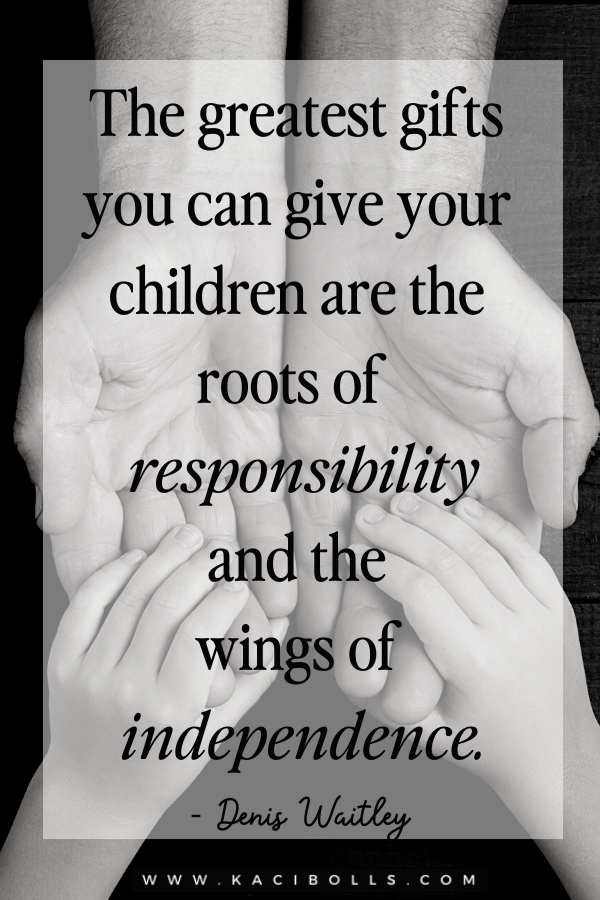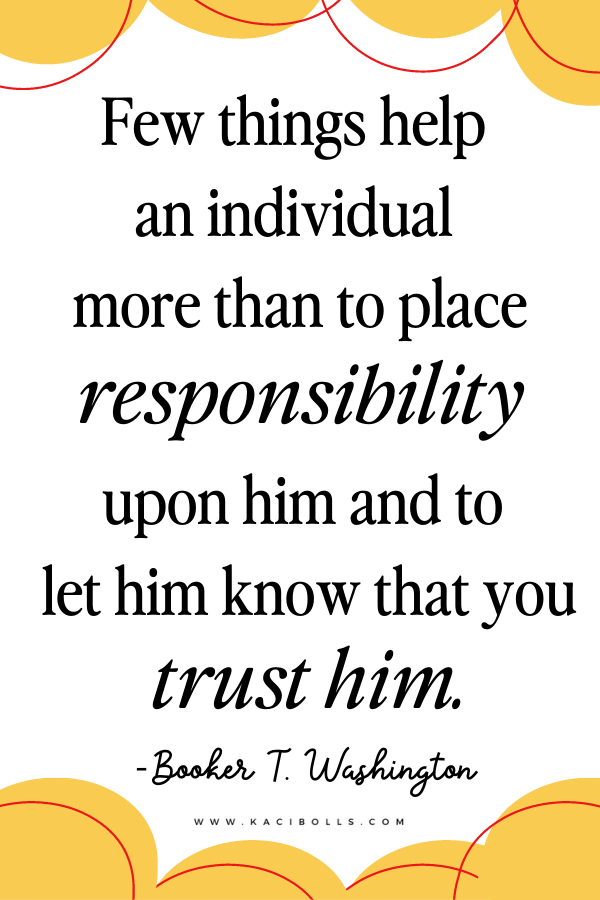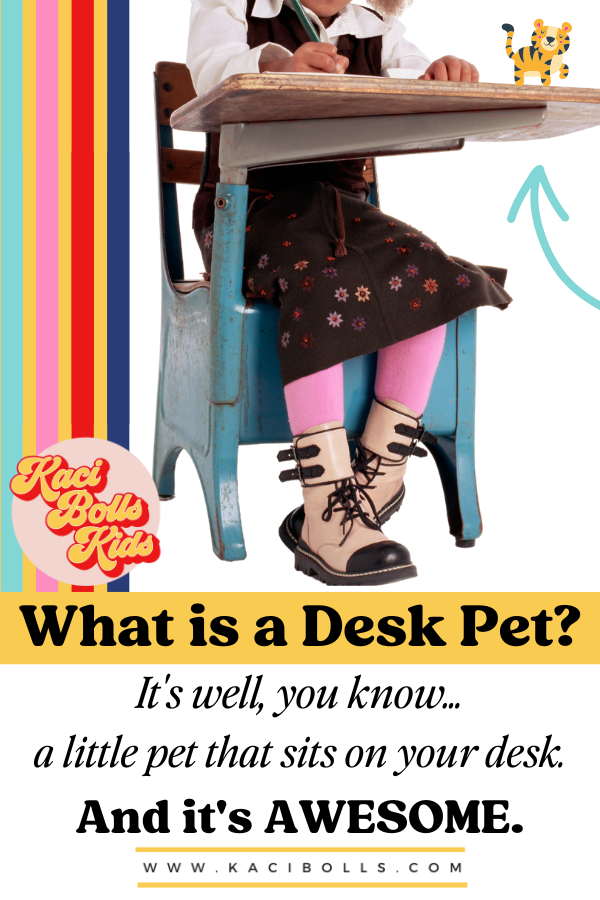
Teaching responsibility for students might seem like a task that's too big to tackle – especially if they are in kindergarten. I mean, isn't it just SO much easier and quicker to do things FOR them? Eh…in some cases, sure. However, teaching responsibility to five-year-olds is not only important for their development, but it can actually be FUN for them. I'll quote a certain kindergartener of mine: “EEEEeeeeee!!! You just made my DREAM come TRUE!”
Have I piqued your curiosity? Read on, my friend.

Teaching Responsibility
Let's start with the basics. What is the definition of responsibility anyway?
Responsibility means being dependable, making good choices, and taking accountability for your actions. A responsible citizen looks out for the well being of others and understands we all have a part to play in making the world a better place.
– PBS.org
Great, but now let's narrow this down a bit further. Specifically, are five-year-olds capable of learning to be responsible? Is responsibility something you can actually teach? Should it be a focus in the kindergarten classroom?
These are all great questions, and my answer to all three can be boiled down to a resounding YES!
Responsibility for Students
Responsibility for students is something that should be explicitly taught in the early grades and will benefit the individual student, the classroom community, and even the teacher's sanity! I'm slightly joking about the sanity, but I promise you that a kindergarten classroom that is full of kids practicing responsibility is a MUCH more pleasant place to be than one that is not.
If you want more detail on that, you need to check out my free downloadable pdf, “10 Things Your Kindergarten Teacher Would Love For You To Know Before They Go.” Get a behind-the-scenes look into what REALLY goes on in kindergarten these days.
I love how this article by PBS Kids, “How To Teach Your Five-Year-Old Responsibility,” describes what responsibility looks like for a kindergartener.
For a five-year-old, responsibility might look like getting themselves ready for school in the morning, helping with specific household chores, or helping care for a pet – in other words, age-appropriate tasks that contribute to the well-being of their family.
-PBS.org
Did you catch the phrase, helping care for a pet? Yes? THAT, my friend, is a bit of blog foreshadowing if you will. 😉
Why responsibility is Important
Responsibility is important for so many reasons, and yet in kindergarten, it's important to start with the reasons that make sense to them. They may not yet grasp how their role as a responsible citizen truly plays a part in the bigger picture of the community. (Although, you'd be surprised at how many times jaw-dropping bits of wisdom have come out of my kindergarteners!)
There is a really great blog post about teaching responsibility to students by Sara, of The Responsive Counselor. She references a book she has studied that reframed her thinking about the definition of responsibility. (“Relationship, Responsibility, and Regulation” by Kristin Van Marter Souers and Pete Hall)
The key takeaway is that “feeling capable is crucial to acting responsibly.” Therefore, helping students have ample opportunity to experience success will also encourage them to practice being responsible.
I agree completely! I have discovered an incredible way to teach responsibility that motivates kindergarteners and is, quite frankly, FUN. Because…it IS kindergarten, after all!)

What motivates kindergarteners?
Providing motivation for students can look very different from grade level to grade level. It can even look very different for kindergarten classes from year to year. Some years my kids have been obsessed with the treasure chest. In other years, all they want to do is earn a pass for lunch bunch in the room. Wearing pajamas, filling up a punch card or sticker chart, and earning extra recess are all great examples of what dangles in front of them as motivation for hard work.
Motivation for Hard Work
Now, before you start thinking to yourself, “Wow. Kids shouldn't be trained to get rewards by working hard or hitting goals,” think again. What do we, as adults do when we want to achieve a goal we are working for? Yep. I'll let you answer that.
- We want to lose weight (goal) – so we will treat ourselves to a new outfit or a spa day (reward) when we achieve a milestone.
- We want to buy a house (goal/reward), so we must learn to save money. (hard to do/hard work)
- We want a paycheck (goal/reward), so we have a job and work hard even on days we would rather not. If we choose not to go to work…well, I don't know about your situation, but I wouldn't get paid.
So, we've established that we need to teach kindergarteners to be responsible. We know that we need to provide plenty of opportunities where kindergarteners can feel capable and experience success. We know that we need to find out what motivates kindergarteners.
I'll now quote again from a certain kindergartener of mine: “EEEEeeeeee!!! You just made my DREAM come TRUE!”
What was that dream? Being a pet owner. How did I make it come true? With desk pets.
What is a Desk Pet?
Wait a second…a WHAT now? A pet that lives on a (*gulp) kindergartener's DESK?
Yep. And they have to feed it, provide a safe environment, and earn money to buy accessories and vacation homes. (Can you see the opportunity to slide in some Social Studies standards practice with wants vs. needs?) 🙂
Let’s start with what a desk pet is NOT.
- A desk pet is NOT alive.
- A desk pet does NOT need to be fed (real food, anyways).
- A desk pet will NOT escape your classroom (unless you have granted an overnight visit).
- A desk pet will NOT leave you giving a eulogy over a shoebox because you bought the underwater frog and not all fish are meant to live together with frogs in a tank, and you can’t ever un-hear the shrieks from 5-year-old girls who are forever traumatized because SMOOCHIE WALLACE THE FROG IS FLOATING AND LOOKS – NOT ALIVE.
But I digress.
What a desk pet IS.
- Desk pets are the number one motivation for students I have discovered thus far in my teaching journey.
- Desk pets bring out a strong desire in five-year-olds to embody all of the characteristics you hope to instill in your students when teaching responsibility.
- Desk pets have allowed my kids to practice working for a long-term goal.
- Desk pets provide opportunities to use saving and spending skills.
- Desk pets have allowed my kids to learn to prioritize wants and needs.
- Desk pets are legendary. At least in my classroom. 😉
Ok, but HOW can desk pets help with teaching responsibility to kindergarteners? GLAD YOU ASKED!
- They know within the first week of kindergarten that desk pets will be available to them when they have practiced and proven they are responsible.
- This is a long-term goal we work for together as a classroom community.
- They practice responsibility personally, as table groups, and together as a whole.
I've never met a five-year-old who didn't want a pet of their own, whether it be a dog, lizard, fish, or rock. I vividly remember wanting my own pet – and discovered a wooly worm in our backyard I made my very own. My husband and I have 2 Birddog brothers named Tuck & Coop, and there isn't a day that goes by that my kindergarteners don't ask about them, make a card for them, or hear a story about them. We constantly talk about how much work owning a pet takes and how we must be responsible to be a good dog mom and dad.
KIDS LIKE AND WANT PETS. THEY DO NOT CARE THAT THEY ARE ERASERS.
When you see your kindergartener ‘meet' their pet for the first time – wow. They give them a name, and they will introduce them to all the other pets. To them, they might as well be living, breathing, and eating things.

Responsibility for students is something that we as educators should be focused on helping them achieve. We need to look for ways to help them practice – and succeed. Once they've shown they can be responsible – reward them with something they will not only enjoy but will continue their growth. To me, there is no better way to motivate and celebrate their efforts than with desk pets.
You will want to check out these posts that go into greater detail!
How Teaching Responsibility in Kindergarten is a Cinch With Desk Pets
What Is a Desk Pet? How Are These Adorable Little Things Successful?

comments +